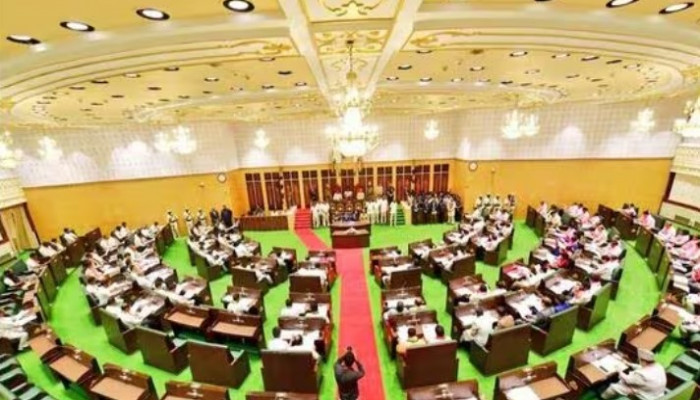Telangana struggles with huge debt from market borrowings: CAG reports
- In Reports
- 11:46 AM, Feb 16, 2024
- Myind Staff
The Telangana government faces the obligation to repay ₹252,048 crore in principal and interest on market borrowings by 2032-33. This repayment burden stems from the indiscriminate borrowings undertaken by the previous BRS government until 2021-22.
The CAG of India highlighted this observation in its audit findings of the state government up to 2021-22. The audit report was presented in the state legislative assembly. According to the report, the substantial debt servicing requirements associated with market borrowings will exert considerable pressure on the government's financial resources.
The CAG highlighted that as of the end of the 2021-22 fiscal year, the state's outstanding liabilities amounted to ₹3,14,663 crore. Additionally, the state is obligated to repay principal and interest on OBB totaling ₹1,18,955 crore.
According to the CAG report, when factoring in the OBB and other liabilities managed through the state budget, the debt-to-GSDP ratio stands at 37.77%. This figure exceeds the targeted ratio of 25% established by the Telangana State Fiscal Responsibility and Budget Management Act by 12.77%. Moreover, it surpasses the norms set by the 15th Finance Commission by 8.47%, which prescribe a ratio of 29.30%.
The CAG reported that the state's OBBs amounting to ₹1,18,955 crore must be serviced using its own resources, with a significant portion, ₹66,854 crore, attributed to the Kaleshwaram Irrigation Project Corporation Limited (KIPCL). The repayment period for OBBs extends up to 14 years, with the Kaleshwaram project's future debt servicing liability estimated at ₹1,41,545 crore over the next 14 years.
Given KIPCL's confirmation of borrowing on behalf of the state government and the absence of revenue streams outlined in the Kaleshwaram Project's Detailed Project Report, the state government is likely to bear the brunt of these substantial liabilities. This burden on state finances could impede future developmental plans. Additionally, as the state faces a revenue deficit, it is compelled to solely finance this deficit through market borrowings.
The CAG criticized the previous government for not spending budget allocations on welfare schemes despite borrowing heavily. For instance, the "Telangana Dalit Bandhu" initiative, launched in August 2021 with a budget of ₹4,442 crore till 2021-22, only saw an actual expenditure of ₹2,101 crore by March 31, 2022.
The remaining funds remained unused in the bank accounts of Telangana Scheduled Caste Cooperative Development Corporation Limited and district administrations. Additionally, out of 38,511 received applications for Dalit Bandhu, only 21,339 were sanctioned by March 2022, despite funds being available.
The previous government allocated funds for various welfare schemes, but significant amounts remained unspent in key areas such as Hyderabad Urban Agglomeration, double bedroom houses, and Most Backward Classes Development Corporation.
In 2021-22, Telangana's economy showed improvement post-Covid-19, with higher GSDP growth. Revenue receipts increased by 26%, driven by rises in own tax revenue (26%), non-tax revenue (46%), and Central tax transfers (48%).
Despite increased revenue, the state government failed to achieve a revenue surplus for the third consecutive year. The revenue deficit stood at ₹9,335 crore, with an additional ₹1,157 crore understated due to non-discharge of interest liabilities.
Image source: Hindustan Times







Comments